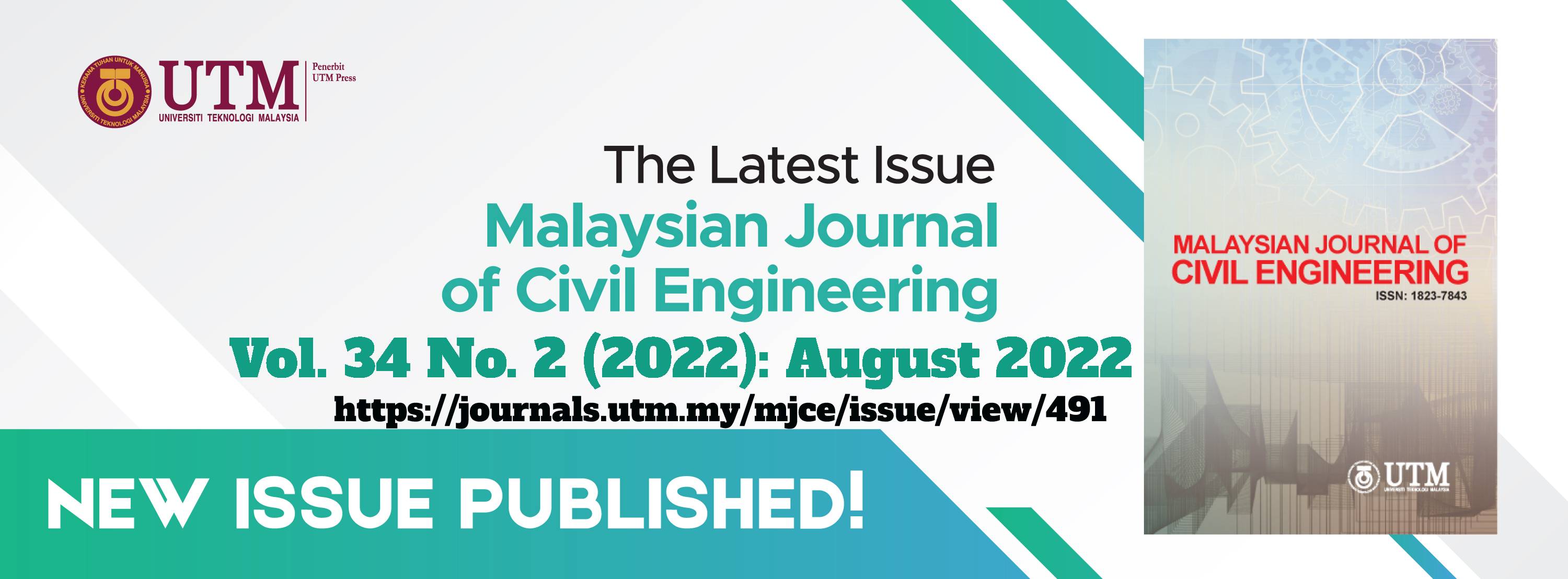A STUDY ON DETERMINING LAND USE/LAND COVER CHANGES IN DHAKA OVER THE LAST 20 YEARS AND OBSERVING THE IMPACT OF POPULATION GROWTH ON LAND USE/LAND COVER USING REMOTE SENSING
DOI:
https://doi.org/10.11113/mjce.v34.17812Keywords:
Land Use/Land Cover change, Remote Sensing, Supervised Classification, Urbanization, Dhaka CityAbstract
Land use is an important factor in understanding how human activities change the environment. Changes need to be monitored and identified in order to maintain a sustainable and conducive environment in any city. Dhaka, the capital of Bangladesh, is one of the most densely populated megacities in the world with an area of 306.4 km2. This study has highlighted how land use has changed as a result of rapid urbanization in Dhaka city in the last 20 years and the relationship of population with these land uses. Land use has been reviewed during the previous 20 years by creating a map of LULC using various GIS and remote sensing techniques using Landsat 5 ETM + images from 2001 and 2011 and Landsat 8 OLI images from 2021.The change in land use has been classified into four categories for the purposes of this study: built-up area, vegetation, water body, and bare soil. After analysis an accuracy assessment has been done in this study to keep LULC's classified maps accurate and transparent. In the time period from 2001 to 2021, the amount of build-up area and bare land in Dhaka city has increased by 27% and 2% respectively. On the other hand, the amount of vegetation has decreased by 29%, the amount of water body is constant. Although the area of Dhaka city did not increase at the same time, the population increased by about 11.04 million. The findings of the study reveal and present a clear illustration of Dhaka's urban growth during the previous 20 years.
References
Ahmed, A., Kaiser, A., Samiha, Z. A., Tonni, A. J., & Author, C. (2020). A STUDY ON LAND USE/LAND COVER MAPPING AND SPATIO- TEMPORAL CHANGE DETECTION AROUND THE SOUTHERN PART OF DHAKA METROPOLITAN DEVELOPMENT PLAN (DMDP) USING REMOTE SENSING TECHNIQUE. Proceedings of the 5th International Conference on Civil Engineering for Sustainable Development (ICCESD 2020), 1–9. https://iccesd.com/proc_2020/Papers/ENV-4755.pdf.
Al Mamun, A. 2013. Identification and Monitoring the Change of Land Use Pattern Using Remote Sensing and GIS: A Case Study of Dhaka City. IOSR Journal of Mechanical and Civil Engineering, 6(2): 20–28. https://doi.org/10.9790/1684-0622028
Alam, H. (2021, June 10). Liveability Index: Dhaka fourth least livable city in world. The Daily Star. https://www.thedailystar.net/backpage/news/liveability-index-dhaka-fourth-least-livable-city-world-2107997
Amin, M. Al. (2018, October 14). Dhaka remains the world’s most densely populated city. Dhaka Tribune. https://www.dhakatribune.com/bangladesh/dhaka/2018/10/14/dhaka-remains-the-world-s-most-densely-populated-city
Dewan, A., & Corner, R. 2014. Dhaka Megacity. In Dhaka Megacity. https://doi.org/10.1007/978-94-007-6735-5
Eastman, J. (2009). IDRISI Taiga: Guide to GIS and Image Processing Volume - Manual version 16.02. August, 325.
ESRI. (n.d.). How Maximum Likelihood Classification works. ArcMap Documentation. Retrieved July 20, 2022, from https://desktop.arcgis.com/en/arcmap/latest/tools/spatial-analyst-toolbox/how-maximum-likelihood-classification-works.htm
Griffith, J. A., Martinko, E. A., Whistler, J. K., & Price, K. P. 2002. Interrelationships among landscapes, NDVI, and stream water quality in the U.S. Central Plains. Ecological Applications, 12(6): 1702–1718. https://doi.org/10.1890/1051-0761(2002)012[1702:IALNAS]2.0.CO;2
Hadiuzzaman, M., Basar Baki, A., & Mostafa Khan, S. 2006. Pollution Status and Trends in Water Quality of the Shitalakhya and Balu Rivers. Journal of NOAMI, 23(August): 1–22.
Hough, M. 2004. Cities and Natural Process. Cities and Natural Process: A Basis for Sustainability: Second Edition. 1–292. https://doi.org/10.4324/9780203643471
IOPscience. (2019). Determining Land Use and Land Cover Changes and Predicting the Growth of Dhaka, Bangladesh Using Remote Sensing and GIS Techniques. Journal of Physics: Conference Series, 1152(1), 1–6. https://doi.org/10.1088/1742-6596/1152/1/012023
Kabir, Ahsanul , Parolin, B. (2011). Dhaka Mega City : Growth , Congestion , Environment and Planning for a Sustainable Future. Asian Planning School Association Congress 2011, September, 1–13.
Lat Long. (n.d.). Where is Dhaka, Bangladesh on Map Lat Long Coordinates. LATLong.Net. Retrieved July 20, 2022, from https://www.latlong.net/place/dhaka-bangladesh-718.html
Murray, N. J., Clemens, R. S., Phinn, S. R., Possingham, H. P., & Fuller, R. A. 2014. Tracking the rapid loss of tidal wetlands in the Yellow Sea. Frontiers in Ecology and the Environment, 12(5): 267–272. https://doi.org/10.1890/130260
Rahman, M. H., Mounota, S., & Tahmid, A. (2022). Water quality assessment and monitoring effects on aquatic life of the Balu River using remote sensing techniques. 6th International Conference on Civil Engineering for Sustainable Development (ICCESD 2022), February, 1–10. http://iccesd.com/proc_2022/Papers/ENV-4371.pdf
Sinha, S., Sharma, L. K., & Nathawat, M. S. 2015. Improved Land-use/Land-cover classification of semi-arid deciduous forest landscape using thermal remote sensing. Egyptian Journal of Remote Sensing and Space Science, 18(2): 217–233. https://doi.org/10.1016/j.ejrs.2015.09.005
USGS. (n.d.). What are the band designations for the Landsat satellites? U.S. Geological Survey. Retrieved July 20, 2022, from https://www.usgs.gov/faqs/what-are-band-designations-landsat-satellites
Miah, M. M., & Bazlee, B. L. 1968. Some aspects of geomorphology of the Madhupur Tract. Oriental Geographer, 12L 39–48.
















